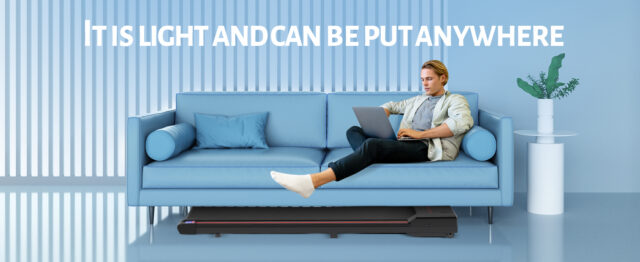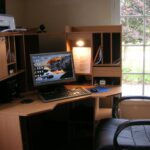Are you feeling the effects of long hours at your desk? It’s no secret that many of us spend most of our days sitting—whether it’s in front of a computer at home or at the office. Prolonged sitting can lead to serious health issues, including neck and back pain, fatigue, and even more severe conditions like heart disease. So, what can you do about it? In this guide, I’ll walk you through practical ways on how to combat long sitting hours in your home office that supports fitness, keeps you moving, and helps combat the downsides of a sedentary lifestyle.
Why You Should Prioritize Fitness in Your Home Office
Working from home offers flexibility, but it also poses challenges. One of the biggest is the temptation to remain seated for hours without moving. This can be detrimental to your health, affecting everything from your posture to your energy levels. Here’s why incorporating fitness solutions into your workspace is worth considering:
- Breaks Up Sitting Time: Adding a walking pad or a standing desk gives you the chance to alternate between sitting and moving throughout the day.
- Improves Posture: Long hours in front of a computer can lead to slouching or poor posture. Ergonomic chairs and lumbar supports can help maintain proper alignment.
- Boosts Productivity: Regular movement improves circulation, which can enhance focus and energy levels. Studies have shown that employees who take short movement breaks are more productive.
Creating Your Home Office Fitness Setup
Creating a balanced workspace is about incorporating fitness solutions that fit seamlessly into your daily routine. Let’s explore some essentials you can integrate to keep your workspace active without requiring significant time commitments.
1. Invest in a Walking Pad
A walking pad is an ideal solution for those looking to incorporate movement while working. The Sperax Walking Pad has become increasingly popular for its compact design and ease of use. You can set it up right under your desk, allowing you to walk while you work.
Why Choose the Sperax Walking Pad to Combat Long Sitting Hours in Your Home Office?
- Compact Design: The Sperax Walking Pad can easily fit under most desks or be stored away when not in use. Its sleek design ensures it won’t dominate your workspace.
- Quiet Operation: Users appreciate its quiet motor, which allows you to focus on your work without distraction.
- User-Friendly Controls: The remote control feature makes it easy to adjust speed on the fly, perfect for maintaining your pace while managing work tasks.
Setting it Up: Place the walking pad in a location where you can easily step on and off it. Consider creating a schedule where you alternate between walking and sitting every 30-45 minutes.
2. Consider a Standing Desk
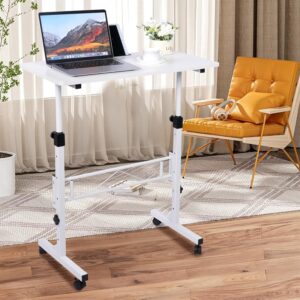 Switching to a standing desk can also contribute significantly to reducing sedentary behavior. A standing desk allows you to alternate between sitting and standing, relieving pressure on your back and improving posture.
Switching to a standing desk can also contribute significantly to reducing sedentary behavior. A standing desk allows you to alternate between sitting and standing, relieving pressure on your back and improving posture.
How to Choose: Look for a model that is adjustable. Electric standing desks offer more convenience for quick height changes but can be pricier than manual options.
Integrating it with Your Walking Pad: For maximum benefits, consider pairing your standing desk with the walking pad. This way, you can easily transition from standing to walking without missing a beat.
3. Add a Desk Pedal Exerciser
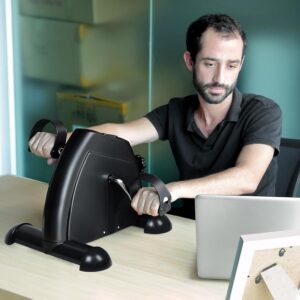 If walking while working feels like too much of a challenge, a desk pedal exerciser can be a great alternative. These compact devices allow you to engage in low-impact cardio right at your desk.
If walking while working feels like too much of a challenge, a desk pedal exerciser can be a great alternative. These compact devices allow you to engage in low-impact cardio right at your desk.
Benefits:
- Space-Saving: Most models are small enough to slide under your desk, making them easy to store when not in use.
- Adjustable Resistance Levels: Look for models with adjustable resistance to increase the intensity as you build strength and endurance.
4. Incorporate Resistance Bands
 Resistance bands are versatile tools that can add strength training into your routine without requiring much space. They are lightweight and easy to use for various exercises, including stretches and resistance training.
Resistance bands are versatile tools that can add strength training into your routine without requiring much space. They are lightweight and easy to use for various exercises, including stretches and resistance training.
How to Use: Keep a set of resistance bands at your desk for quick workouts during breaks. Simple exercises like seated rows or lateral leg lifts can keep your muscles engaged.
5. Focus on Ergonomics
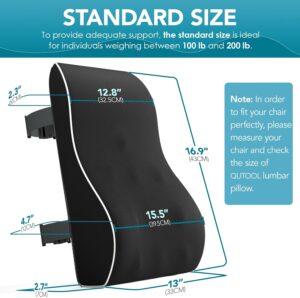 While fitness equipment is essential, don’t overlook the importance of an ergonomic workspace. An ergonomic chair with lumbar support can make a significant difference in your comfort during long hours at your desk.
While fitness equipment is essential, don’t overlook the importance of an ergonomic workspace. An ergonomic chair with lumbar support can make a significant difference in your comfort during long hours at your desk.
What to Look For:
- Adjustable Features: Ensure the chair supports your back and allows you to adjust height and tilt for optimal comfort.
- Support for Good Posture: A chair that encourages a healthy sitting posture can reduce the risk of back pain and enhance your overall sitting experience.
Making Movement a Habit
Incorporating fitness into your home office isn’t just about having the right equipment; it’s about developing habits that encourage regular movement. Here are some tips to help make physical activity a part of your daily routine:
- Set Hourly Reminders: Use your phone or computer to remind you to move or stretch every hour. This can be as simple as standing up, walking to another room, or doing a quick stretch.
- Incorporate Short Workouts: Schedule short bursts of exercise throughout the day. This could include a few minutes on the walking pad, desk push-ups, or resistance band exercises.
- Keep Fitness Equipment Visible: Having your walking pad, resistance bands, or pedal exerciser within sight makes it easier to remember to use them throughout the day.
Stretching Tips for Long Sittings
Beyond fitness equipment, adding some simple stretches can make a huge difference in reducing stiffness and tension. Here are a few quick ones to incorporate into your day:
- Neck Stretches: Tilt your head from side to side to relieve neck tension.
- Wrist Flexor Stretches: Extend your arm in front of you with your palm facing up, using your opposite hand to gently pull down on your fingers.
- Seated Twists: While sitting upright, twist your torso to one side, placing a hand on the back of your chair for support. Repeat on the other side to relax your spine.
Embrace a Healthier, More Active Workday
Incorporating fitness into your home office isn’t about creating a perfect workout space. It’s about making small, realistic changes that can keep you moving and feeling better. Start with one or two pieces of equipment, like the Sperax Walking Pad, and focus on consistency.
Creating a workspace that encourages movement isn’t just about having equipment; it’s about building healthy habits that make movement a natural part of your day.
Whether you choose to walk while you work, use resistance bands during breaks, or invest in a standing desk, the goal is to create a balance that allows you to be productive while prioritizing your health. Even if you don’t click to buy right away, the awareness of staying fit and healthy in a home office environment is invaluable.
Let’s take those small steps toward a healthier work routine, and remember—every little bit counts!
Now loading...

